Of the continent’s many toxic critters, some of them are creepy, some are crawly, some slither and others, well, shoot venomous harpoons from their proboscises.
North America’s most toxic species vary widely from the well-known black widow to the less-frequently-talked-about short-tailed shrew. But before we panic about venomous spiders in our garage or deadly snakes underfoot, know that mounting evidence shows toxins and venom from snakes, spiders, scorpions and other creepy crawlies may actually be used to help cure or alleviate human maladies. Not to mention, the creatures are an important part of our natural world.
“All of them help keep balance between interacting species,” says Stephen Mackessy, a biological sciences professor at the University of Northern Colorado who specializes in snakes and other venoms.
Some benefits are even clearer: Rattlesnakes, for example, keep rodent populations under control, which keeps mice and rats out of our pet food, houses, and tents.
Curious about what other venomous, poisonous or might-possibly-be poisonous critters are living near you or under the ocean?
Here are a handful of toxic creatures, some you might think you know and others probably unfamiliar.
-
Black Widows
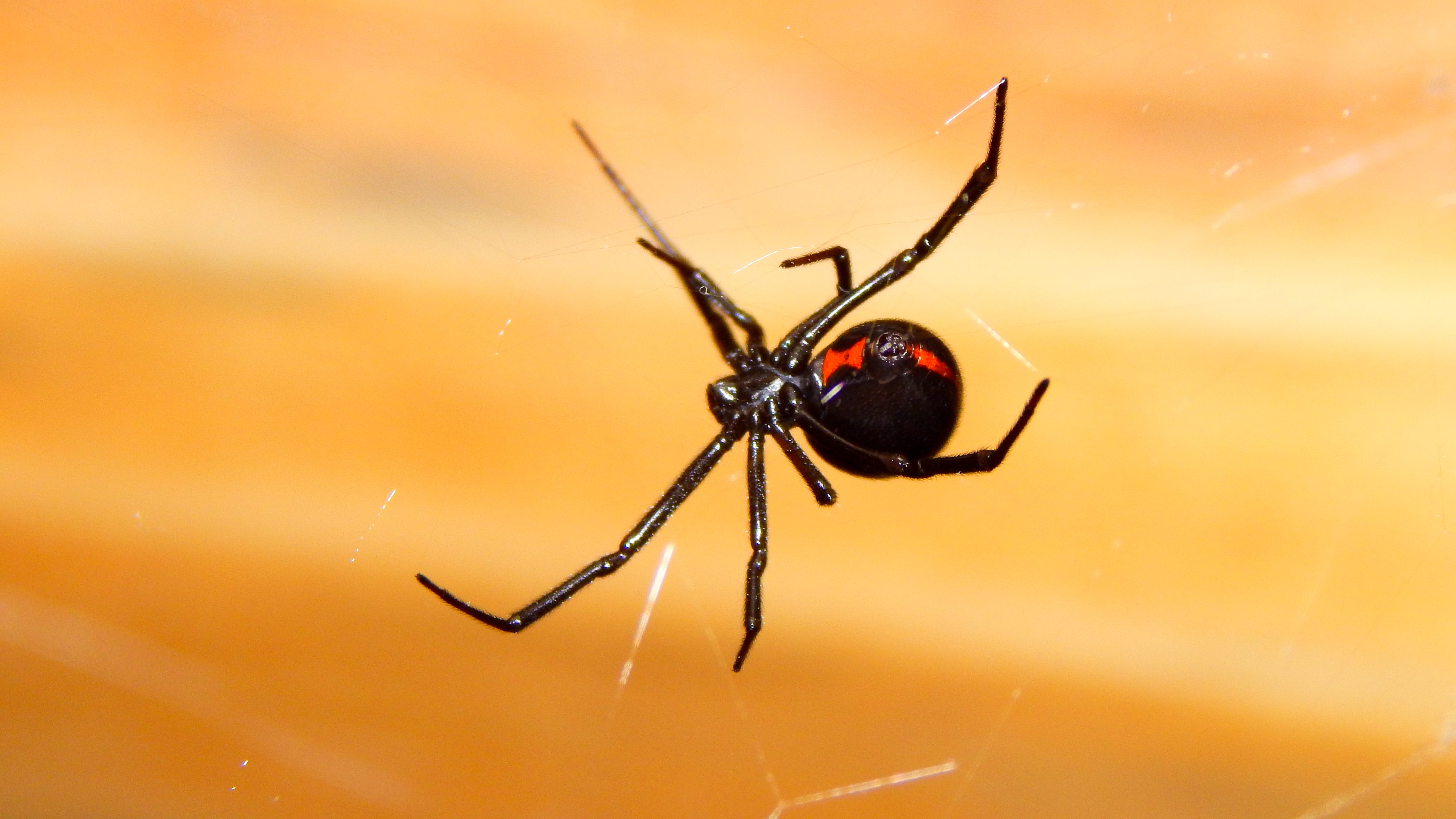
A black widow spider photographed in Colorado. © Chris Pague/TNC First, let’s dispel the idea that all black widow females kill and eat their mates, thus earning them the name “widow.”
They don’t, says Jerome Rovner, a professor emeritus at Ohio University.
They do, on very rare occasions, eat their mates. But it’s not nearly as common as people think. Black widows are also not as lethal as we tend to believe, and deadly bites in healthy adults are extremely uncommon.
Black widow venom is a neurotoxin, which can ultimately stop someone from breathing. While some people bit by black widows end up in the hospital, most of the time antivenom is delivered more to ease symptoms than prevent death, Rovner says.
Fortunately, black widows are often in webs and easily seen or avoided. “It will only bite if a person accidentally projects a hand into the web, in which case the spider may bite defensively,” he says.
Most bites happen when someone reaches somewhere covered like a pile of wood, for example, or a rarely-used wheelbarrow, or by placing their hand on a rock ledge. Experts recommend wearing gloves to prevent an accidental bite.
“Of the world’s 50,000 species of spiders, 99.9% are not dangerous to humans,” Rovner says. “The components of their venom evolved for capturing insects, more so than for self-protection.”
Black widow bites were far more common before indoor plumbing. Fly-infested outhouses offered plenty to eat and ideal locations for webs. Combine that with frequent human trips at night, and bites were bound to happen.
-
Northern Short-tailed Shrews
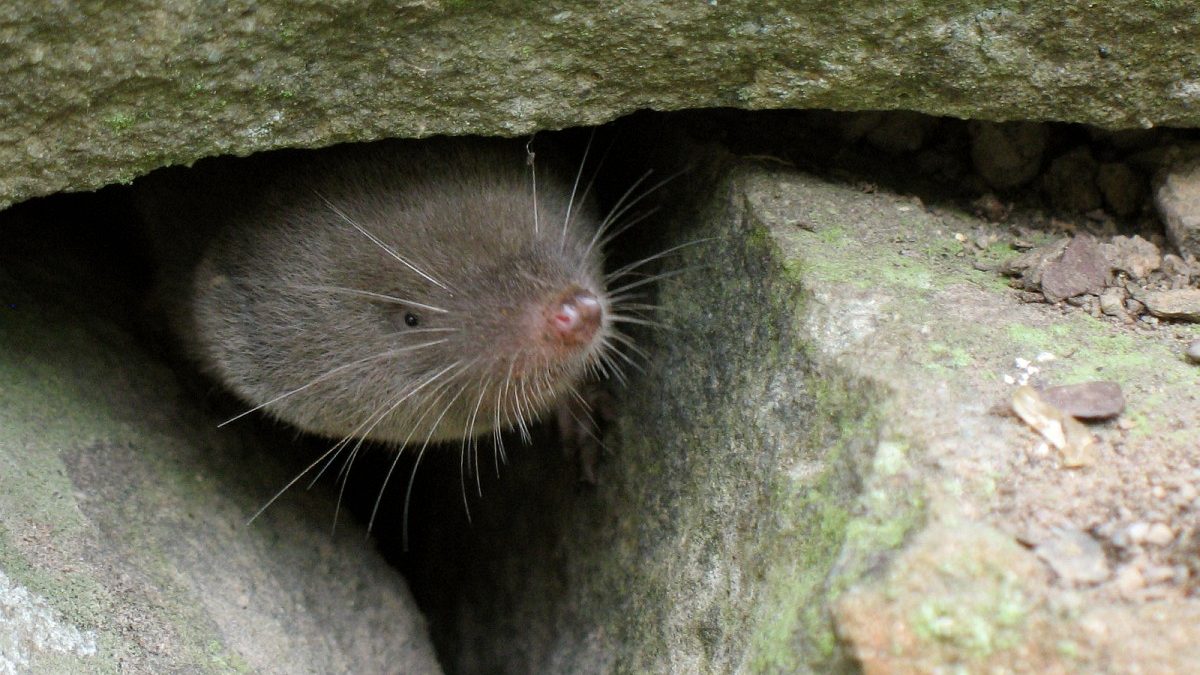
A northern short-tailed shrew. © Gilles Gonthier / Flickr Contained within North America is a suite of large carnivores with deadly reputations: grizzly bears, wolves, mountain lions. Among that list, however, is not one of the world’s few venomous mammals.
The northern short-tailed shrew rarely makes headlines because despite this creature’s incredibly toxic saliva – it contains enough venom to kill up to 200 mice at any given time – the shrew is actually not a threat to humans at all. (Though Maryland’s Department of Natural Resources notes a shrew’s bite is quite sharp if handled).
The nearly-blind shrew evolved to paralyze its prey – typically mealworms, beetles, crickets and the occasional mouse –by chewing on it and letting its venomous saliva infect the prey.
And prey it needs. Shrews spend almost the entirety of their relatively short lives eating. The average human would need to consume about 195 pounds of food a day to eat the same proportion as shrews. Eating is so critical, in fact, that shrews have the ability to store paralyzed but very-much-alive worms and other food in a kind of shrew jail, ready for lean times.
Are shrews deadly venomous? Yes. Should you be wary of them? Not unless you’re an earthworm.
-
Coral Snakes
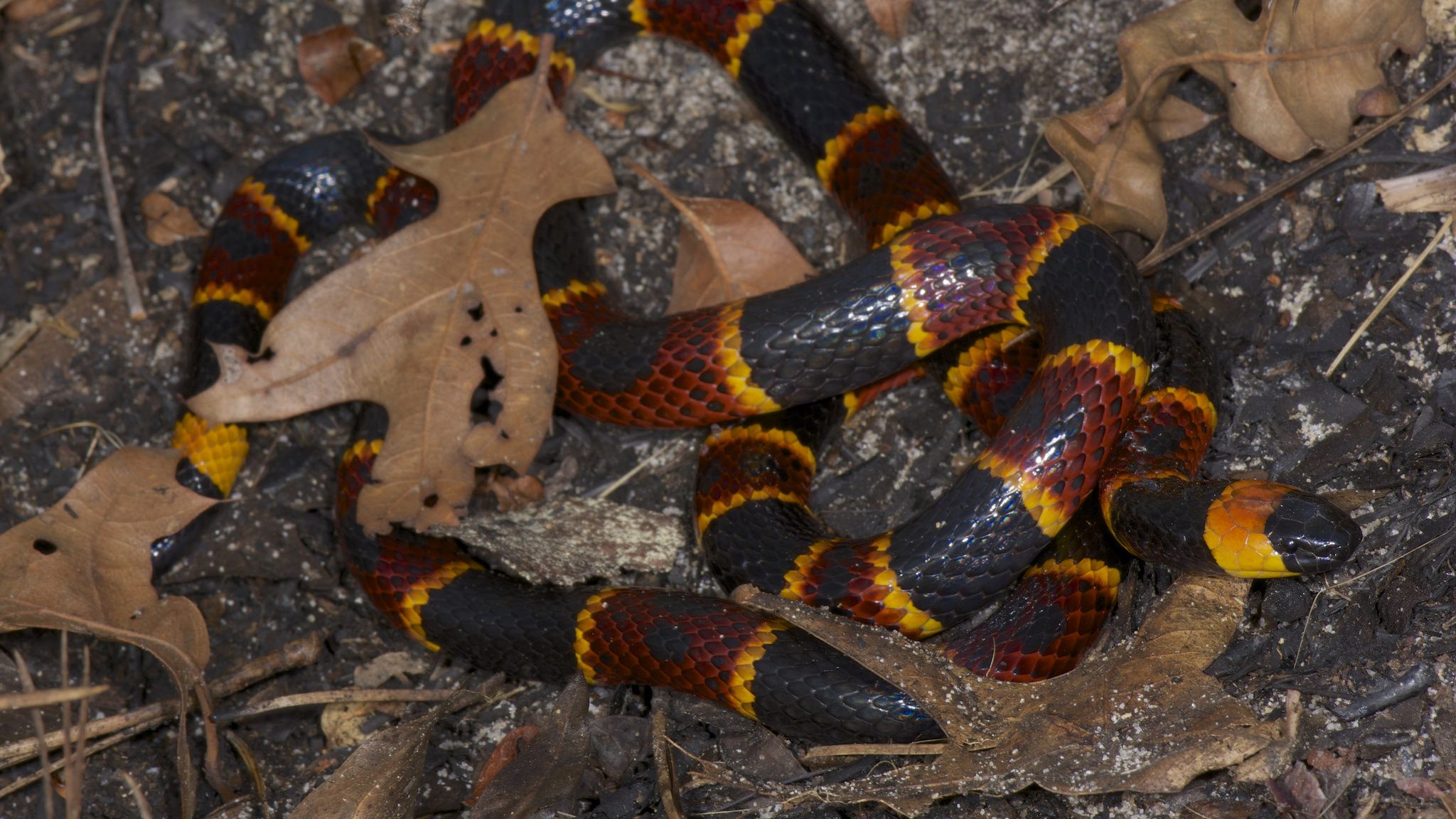
Micrurus fulvius, an eastern coral snake. © FWC Fish and Wildlife Research Institute / Flickr Before we explain the wonder that is a coral snake paralyzing and consuming another snake, let’s dispel one misconception: All venoms are the same. They’re not.
Most snakes have variations on certain types of venoms, which suit that snake’s particular needs. But two ways that venoms interact with prey have evolved distinctly from each other. Most rattlesnake venom, for example, breaks down tissue and blood vessels, which is why bites immediately impact those bitten.
The second, often found in cobra and coral snake venoms, hits an animal’s neurological system, says Mackessy. In those instances, the toxin inhibits communication between neurons and muscle cells, rendering the recipient paralyzed.
The coral snake evolved its unique venom largely because of its prey: other snakes.
One fast snake stopping another fast snake can be challenging, which is why coral snake venom renders other snakes immediately paralyzed. “Then the coral snake can work its way up to the head and swallow it and have a big noodle meal,” Mackessy says.
Fortunately, the coral snake is unlikely to bite you.
“A friend of mine had a coral snake crawl between his feet when he was standing in flip flops in his backyard, but the animal made no attempt to bite him.” He encourages people to be aware of their surroundings, though, and wear protective clothing in areas shared by coral snakes.
Mostly, don’t pick them up and play with them.
-
Ruffed Grouse
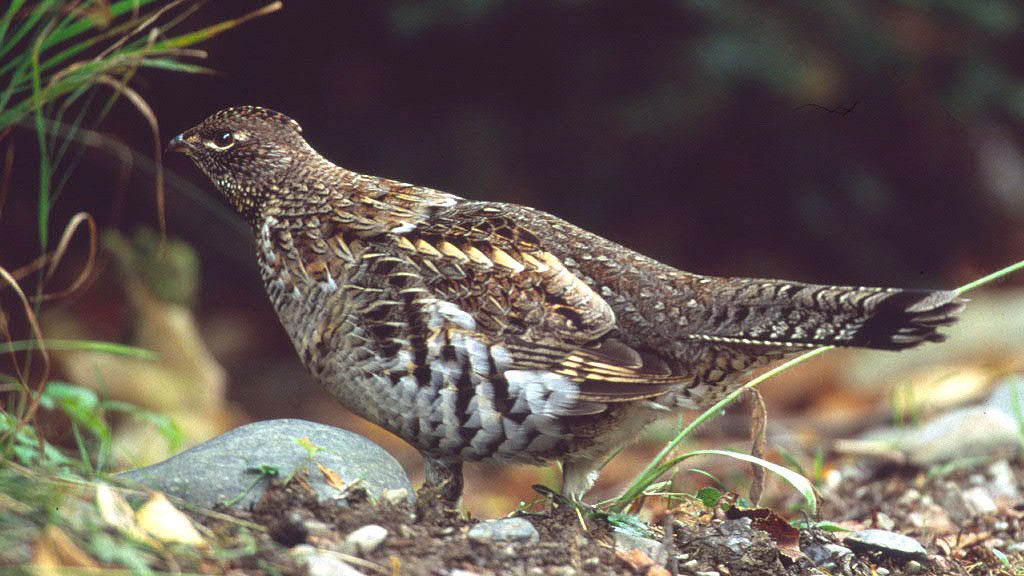
A ruffed grouse. © Bill Silliker Jr. / TNC Venomous snakes? Sure. Deadly scorpions? OK. Poisonous ruffed grouse? Maybe?
Apparently, well over a century ago, one of the most popular game birds in the U.S. was killing people. To be clear, the bird wasn’t actually killing people. People who ate the bird died.
Most of the poisonings were documented in the 1700 and 1800s, with no accounts reported in the U.S. since 1886, according to an exhaustive – and fascinating – review of all ruffed grouse poisonings compiled by the University of California, Davis.
The prevailing theory at the time were that some ruffed grouse consumed in late winter had eaten sheep laurel, their flesh absorbed the toxin, and humans were then poisoned from the tainted meat.
Other theories posited that the meat was only tainted in birds which were killed and kept whole for well over a week before being sold (whole birds appeared plumper at market and food safety must not have been much of a concern).
After a rash of poisonings in Britain from imported birds, one Londoner theorized in a newspaper that the container ship had been “defiled by toxic preservatives by crooked shippers, since ‘knavery was an ingrained Yankee trait.’”
Other theories stated that those who didn’t fall ill were saved by wine or other alcohol at dinner, weakening the toxin.
Whatever it was, by the turn of the 20th century, poisonings seemed to be a thing of the past. The UC Davis paper speculates the change may have been a restriction on hunting ruffed grouse in late winter, though it may well have been something else altogether.
“The evidence suggests that despite the occasional toxic tragedy, Americans of the era regarded ruffed grouse consumption as no more than an agreeable form of “culinary roulette,” and accepted the risk as small or incidental, given the usual gustatory reward, much the way that 20th and 21st century Japanese gastronomes have relished their puffer-fish,” the paper states.
And to this day, even the National Library of Medicine includes the North American ruffed grouse in a paper discussing poisonous birds.
-
Cone Snails
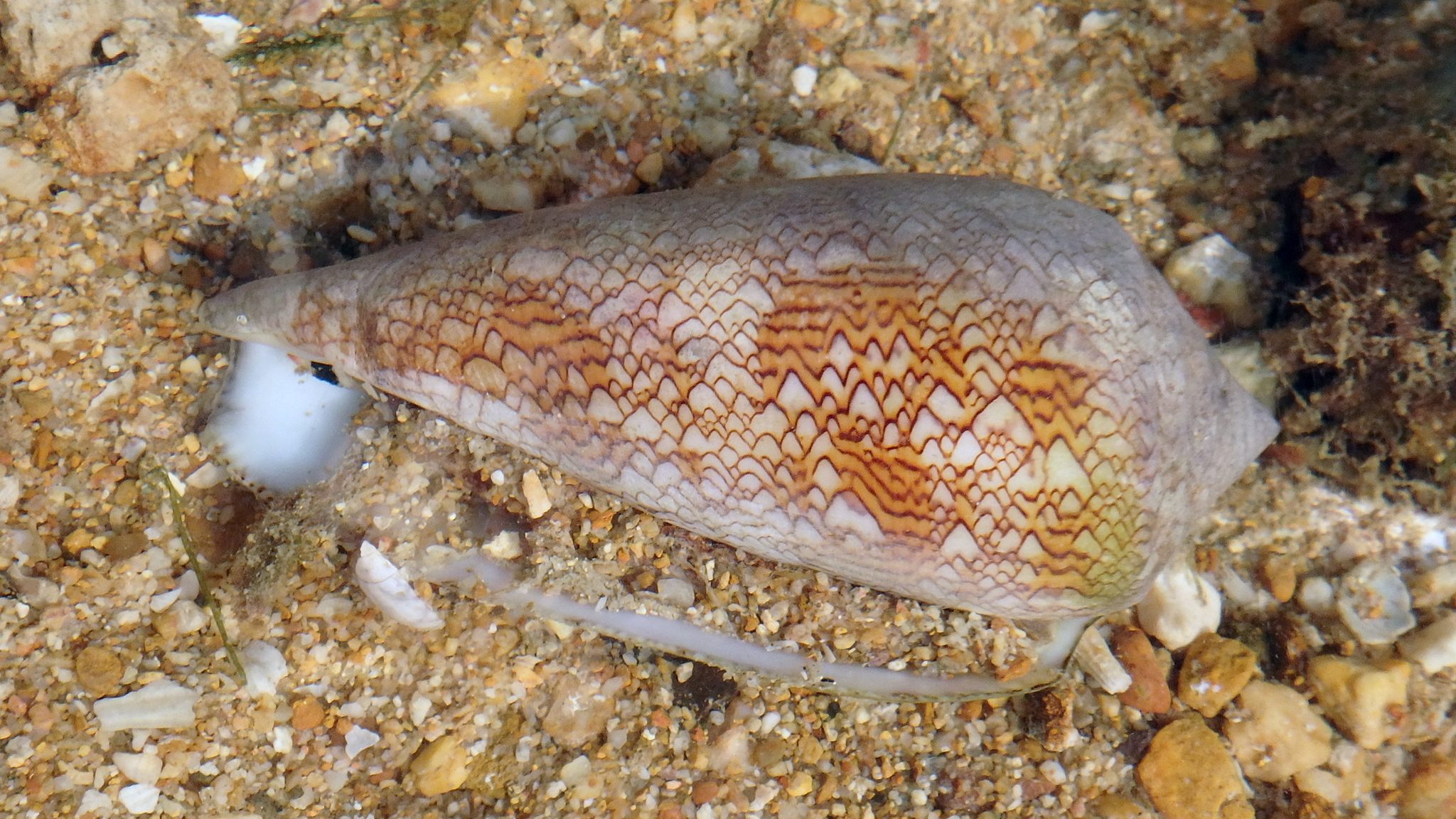
A textile cone snail. © Rai Tan / Flickr Last, but certainly not least, is a snail that kills fast-moving fish by impaling them with a venomous harpoon.
More than 500 different species make up the conus genus of snails, with the most potent living far away from North America. But they are potent – so much so that divers are warned not to pick up cone snails as souvenirs for fear they will be stung.
“The venom from one cone snail has a hypothesized potential of killing up to 700 people,” according to the National Center for Biotechnology Information.
Cone snails range from an inch to up to 11 inches long, and find prey and breathe using a siphon. The creatures live in deep, tropical waters including the Red Sea and Caribbean, though can also be found off the coast of Florida. They hunt primarily at night and bury themselves in the sand during the day.
They “primarily encounter humans only when provoked.”
Their venom, however, is being studied widely because of its ability to “cause paralysis through multiple neuromuscular blocking steps.” In short, while cone snail shells are beautiful, and the venom may lead to lifesaving drugs for humans, we should not play with them.
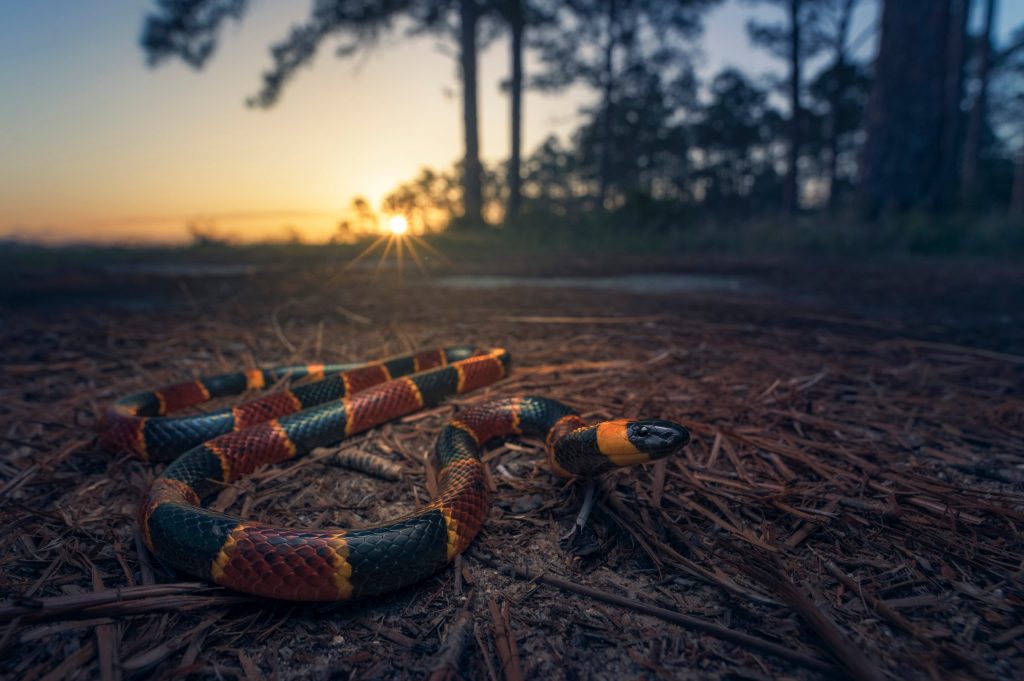



Thats nice
I love learning about the animals we humans share the planet with. Ms. Peterson, reading the results of your research added so much to what information I already had. Thank you!